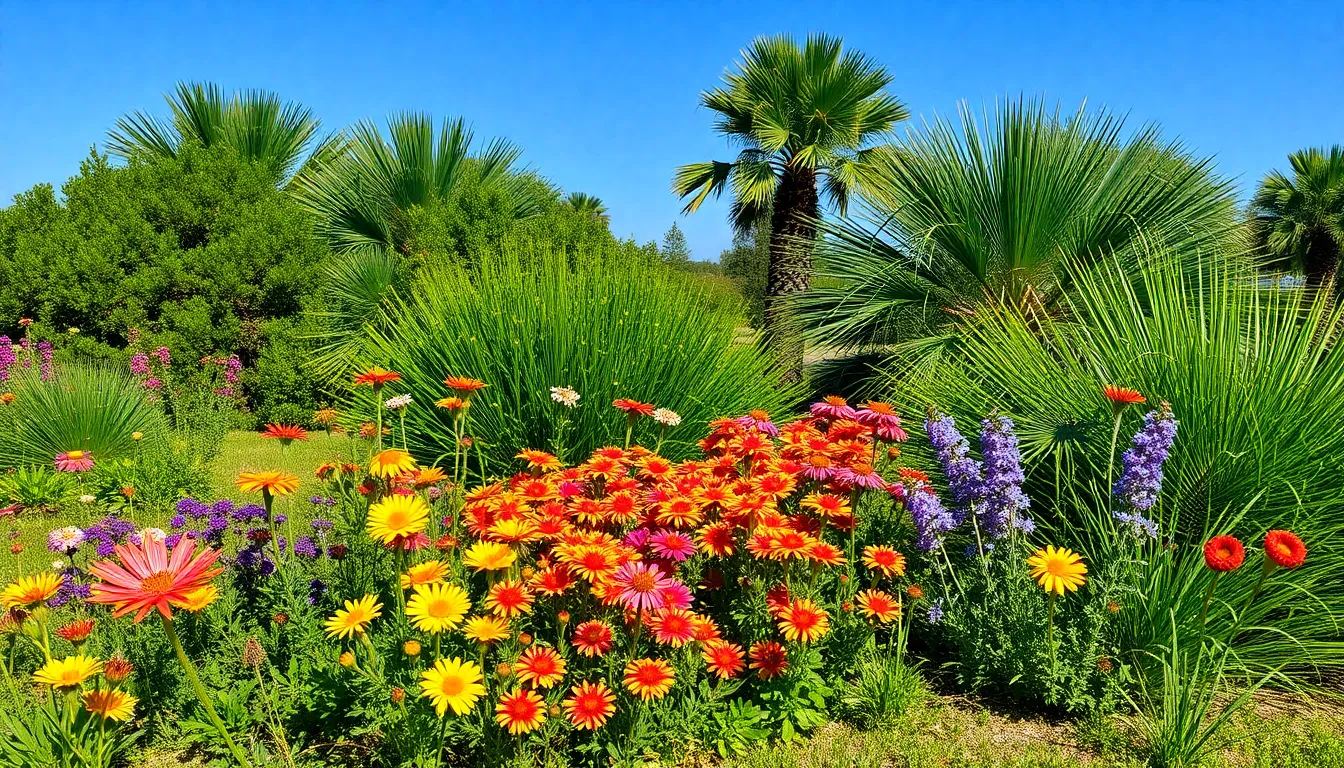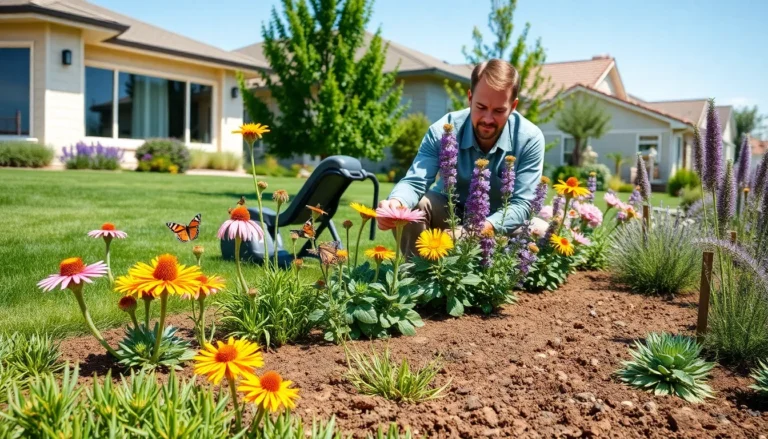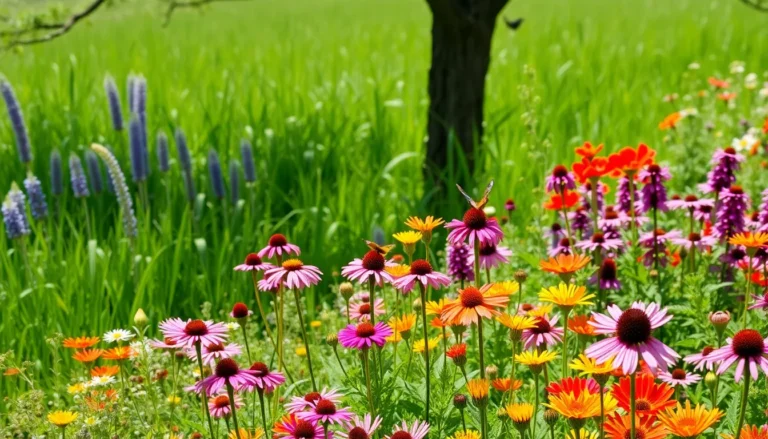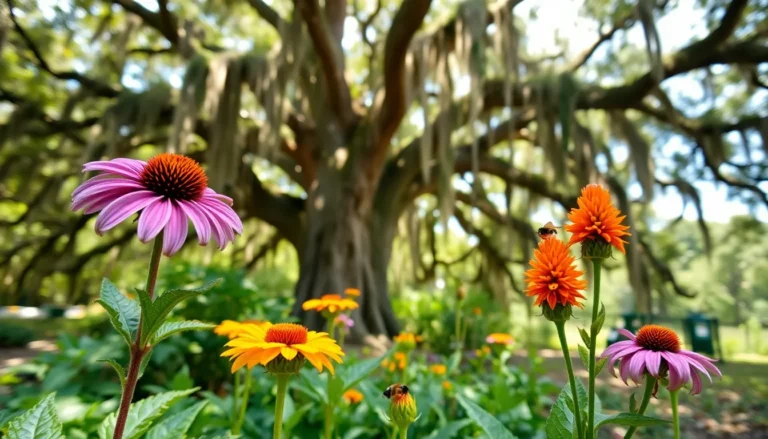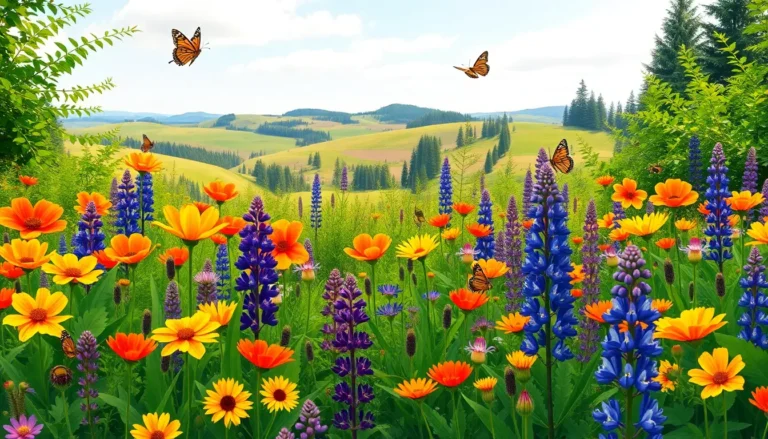Florida’s got a unique charm, but its landscape can sometimes resemble a tropical jungle gone rogue. Why not embrace the beauty of native Florida plants to create a stunning outdoor space that even the alligators would envy? These hardy, low-maintenance plants not only thrive in the Sunshine State’s unpredictable weather but also attract local wildlife and support the ecosystem.
Native Florida Plants For Landscaping
Utilizing native Florida plants for landscaping provides numerous advantages, from environmental benefits to enhanced beauty in outdoor spaces. These plants offer resilience and low-maintenance options suitable for Florida’s diverse climate.
Environmental Advantages
Native Florida plants enhance local ecosystems by providing habitats for native wildlife. They reduce the need for chemical fertilizers and pesticides, promoting healthier soil and water. As these plants thrive in the natural climate, their water requirements are low, leading to significant water conservation. Additionally, native species prevent soil erosion with their deep root systems, improving soil stability. Supporting pollinator populations, such as bees and butterflies, becomes easier with native flora.
Aesthetic Appeal
Native plants deliver unique beauty to landscapes with their vibrant colors and varied textures. These species often bloom at different times, ensuring year-round visual interest. Local plants attract wildlife with natural beauty, enriching the outdoor experience. Planting natives also reflects Florida’s unique ecological heritage, preserving the state’s botanical identity. Homeowners appreciate low-maintenance options while enhancing curb appeal. Using fewer resources, native plants contribute to sustainable landscaping practices.
Popular Native Florida Plants
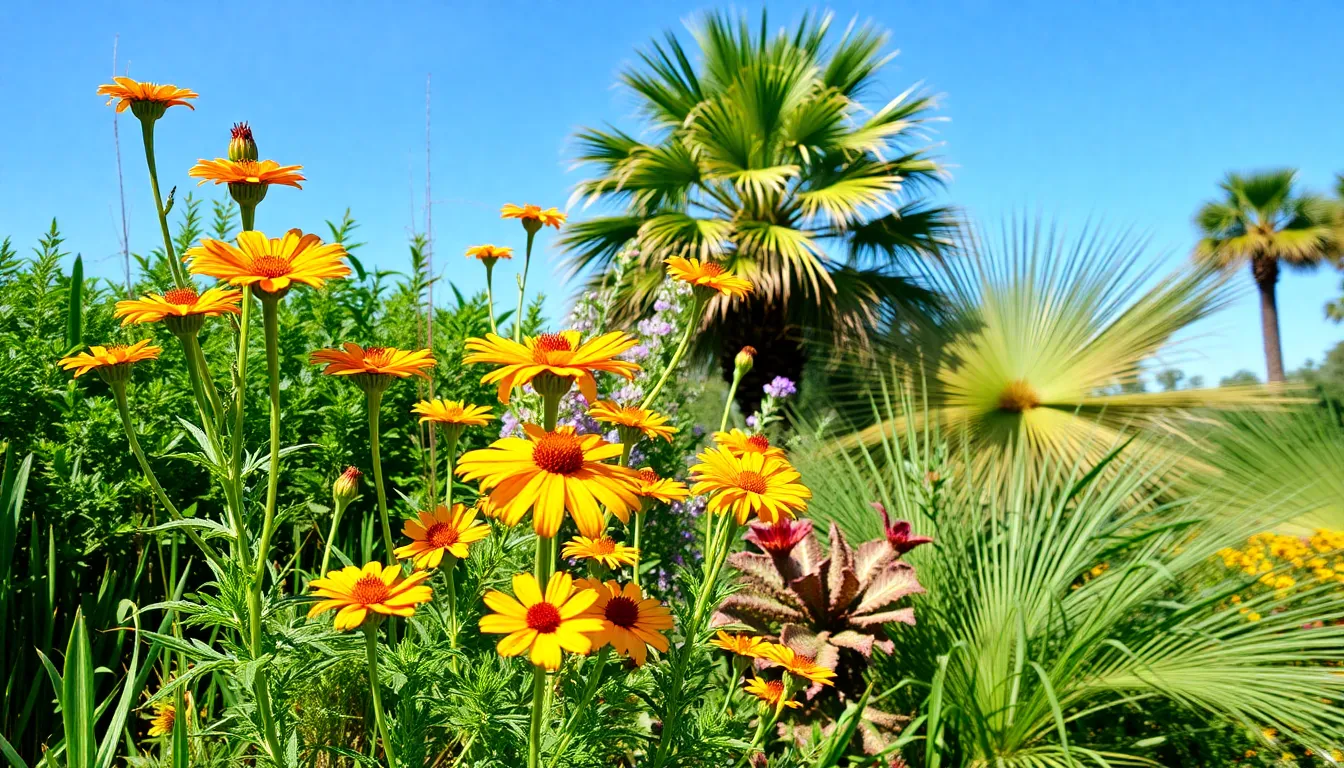
Native Florida plants offer vibrant options for landscaping, enhancing outdoor beauty while supporting local ecosystems. The following categories highlight key native species ideal for Floridian landscapes.
Flowering Plants
Butterfly weed brings vibrant orange flowers that attract pollinators. Coreopsis, known as the state flower, offers cheerful yellow blooms throughout spring and summer. Blue mist flower produces clusters of blue blooms loved by butterflies. These flowering plants add striking color and support essential wildlife.
Shrubs and Bushes
Saw palmetto stands out with its fan-like leaves and tolerance for sandy soils. Florida-friendly wax myrtle serves as a versatile shrub, providing fragrant foliage and berries for birds. Pink trumpet tree showcases stunning pink flowers that bloom in spring, attracting hummingbirds and landscape admirers alike. These shrubs contribute structure and habitat in gardens.
Grasses and Ground Covers
Beach sunflower thrives in sandy areas and produces bright yellow flowers. Muhly grass stands out with its ornamental plume, adding texture to landscapes. Southern apple-green ferns work well as ground covers, creating lush and vibrant landscapes. These grasses and ground covers enhance aesthetics while requiring minimal maintenance.
How To Incorporate Native Plants Into Your Landscape
Incorporating native plants into a landscape enhances its ecological balance and aesthetic appeal. Following specific design tips and planting techniques ensures success.
Design Tips
Start by considering the natural layout of the property. Group native plants in clusters for visual impact. Use varying heights to create depth. Choose plants that bloom at different times to maintain seasonal interest. Incorporate pathways to enhance accessibility while promoting flow. Position plants according to sunlight and moisture needs, ensuring that each species thrives in its optimal environment. Select complementary colors and textures to create a cohesive look. Include native grasses and ground covers that require minimal maintenance. This approach promotes biodiversity and attracts local wildlife.
Planting Techniques
Prepare the soil before planting. Amending it with organic matter improves fertility and drainage. Create holes that accommodate the roots of each plant without crowding. Set the plants at the same depth as they were in their original containers. Water them thoroughly to eliminate air pockets and encourage root establishment. Apply a layer of mulch to retain moisture and suppress weeds. Monitor the plants during the initial growth phase, providing additional water if needed. Encourage a natural growth habit by avoiding excessive pruning. Following these techniques leads to a thriving native garden that supports Florida’s ecosystem.
Maintenance Requirements For Native Florida Plants
Native Florida plants require minimal maintenance, making them an excellent choice for sustainable landscaping. Understanding specific care requirements ensures these plants thrive.
Watering and Irrigation
Establishing a suitable watering routine supports the health of native plants. Initial planting periods typically demand more water. Once established, many native plants exhibit drought tolerance. Watering every two to three weeks suffices for established plants, especially during dry spells. Drip irrigation systems provide efficiency and conservation. Rain gauges can monitor natural precipitation levels, reducing unnecessary watering. Native plants prefer deep watering over frequent shallow applications, promoting robust root systems.
Pruning and Care
Pruning enhances the appearance and health of native Florida plants. Light pruning encourages bushier growth and removes dead or damaged branches. Timing matters; early spring before new growth begins provides the best results. Regular inspection for pests ensures prompt identification of potential issues. Organic pest control methods align with native plant benefits, promoting ecosystem health. Applying mulch retains moisture and suppresses weeds, contributing to overall plant care. Additionally, seasonal divides ensure flowers bloom at various times, maintaining visual interest throughout the year.
Conclusion
Embracing native Florida plants for landscaping not only enriches outdoor spaces but also fosters a healthier ecosystem. Their resilience and low-maintenance nature make them ideal for homeowners looking to create beautiful gardens with minimal effort. By selecting these plants, gardeners can attract local wildlife while reducing the need for harmful chemicals and conserving precious water resources.
The vibrant colors and diverse textures of native flora ensure that landscapes remain visually appealing throughout the year. With thoughtful design and proper care, anyone can cultivate a thriving native garden that reflects Florida’s unique ecological heritage. Choosing native plants is a step towards sustainable landscaping that benefits both the environment and the beauty of one’s home.

